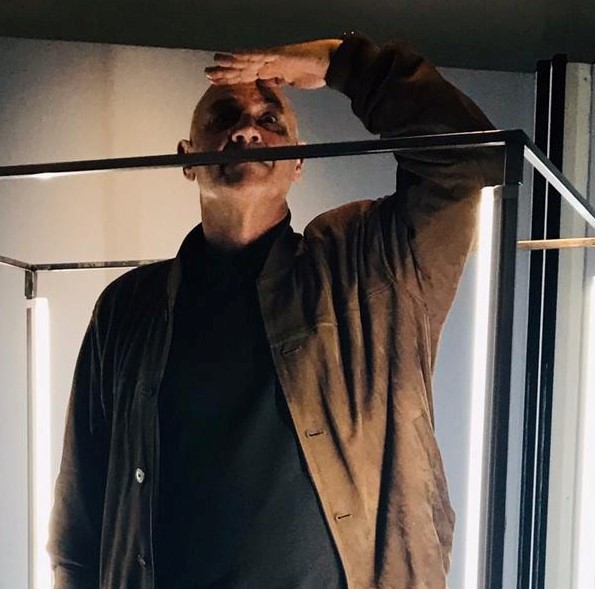Software culture and art system
Until the early 2000s, video art and audiovisual productions were artistic creations by authors mainly engaged in the production of object-artworks to be exhibited in the gallery. With the digitization of all analogue signals, and the consequent birth of a specific software culture, in the last ten years a new kind of artist has been increasingly specified who is dedicated exclusively to audiovisual productions, but often comes from quite different expressive disciplines like performance, theater, dance, animation, graphics, photography and cinema, amalgamated, for the first time, in hybrid products that are difficult to cayegorize.
This new kind of artist and works are still completely marginal and little valued in the distribution system of contemporary art. The works end up being used and disseminated only on digital platforms on the net and exhibited in festivals dedicated to the multiple aspects of audiovisual, from video art to film shorts to documentaries, thus underlining the suspicion that the art system manifests in considering this type of project as art tout court.
Randomly, some galleries interested in the promotion of audiovisuals are looking for a safe way of placing works of this type on the market. The collector, on the other hand, fears the risk of disclosure of works that are now exclusively produced on digital media, seeing the capital invested in the purchase of audiovisuals vanish.
The criticism dedicated to research on these forms of art does not emerge from an academic approach, and the curator, in his role as economic mediator between the public and the gallery, does not show any effectiveness. The result is that a potential slice of the market remains unused because there is a lack of sector legislation, a conventional and technical corpus, a discipline that defines a shared attitude that can economically enhance an increasingly wide production sector.
Disciplining the relationship between this type of works and their safe placing on the market also implies a better definition of the role of the critic and the curator, who will rather have to assume the duties of an expert who guarantees the authenticity and quality of the work, regardless of the mere corporate promotion of galleries, acting as guarantor of the artistic work.
In search of a new economic standard for promoting software culture in the art system, a new standard in the archiving, cataloging and use of digital audiovisual works will have to be added. At this juncture I believe that the various festivals dedicated to video art in our country can currently represent a widespread model of archive that could even merge and share sensitive data relating to works and authors in order to achieve a homogeneous, albeit dynamic, picture of video art.
We must also consider that at least three factors have led this art form to substantial autonomy also as a genre: a) the digitization of analog signals and the consequent hegemony of widely used software; b) the convergence of several artistic disciplines within it; c) the festival and museum exhibition as privileged distribution channels in the face of the simultaneous abandonment of the traditional art system in the gallery-collector relationship.
With regard to point c) we must highlight a fundamental characteristic of digitization, namely the possibility of widespread dissemination of audiovisual products thanks to the Internet. If, on the one hand, this opportunity represents an advantage for the promotion of video art work, often exhibited on personal web sites or dedicated platforms such as Vimeo or Youtube, on the other hand it represents a serious limit to the marketability and sale of video works; hence the progressive disinterest of the traditional distribution system which envisages the relationship between gallery and collecting with the mediation of a critic or curator.
This phenomenon has pushed the video artist towards festivals dedicated to audiovisuals in general and in particular to video works, generating an exponential multiplication of international shows that present assorted experiments which involve devices and languages of various kinds, without prioritizing selective curatorial criteria: themes, metaphors or arbitrary systematics, leaving complete freedom of expression to the artist and allowing the researcher critic to have a realistic cross-section of audiovisual productions as they manifest themselves objectively. Paradoxically, it is precisely the abandonment of the contemporary art system that brings video art to its complete expressive autonomy and to its birth as a genre in its own right.
Piero Deggiovanni
 Désirée Nakouzi De Monte-Andrea Parenti, Super tasty fatty motor. Kabuki YOOOO!, 2018
Désirée Nakouzi De Monte-Andrea Parenti, Super tasty fatty motor. Kabuki YOOOO!, 2018
 APOTROPIA, Timepulse, 2017
APOTROPIA, Timepulse, 2017
 Armenia e Sathyan Rizzo, Acta Barbatiani, 2017
Armenia e Sathyan Rizzo, Acta Barbatiani, 2017
 Audrey Coïaniz, Linea d’ Onda, 2018
Audrey Coïaniz, Linea d’ Onda, 2018
 Dehors-Audela, Vacuum, 2018
Dehors-Audela, Vacuum, 2018

Piero Deggiovanni (Lugo, 1957) is a professor of History of Contemporary Art and History and Theory of New Media at the Academy of Fine Arts in Bologna and at LABA in Rimini. He is a critic and researcher in the field of contemporary art, member of the scientific committee of the Videoart Yearbook, Bologna University. For several years he has dedicated himself exclusively to research, focusing on video art and experimental cinema.






NO COMMENT